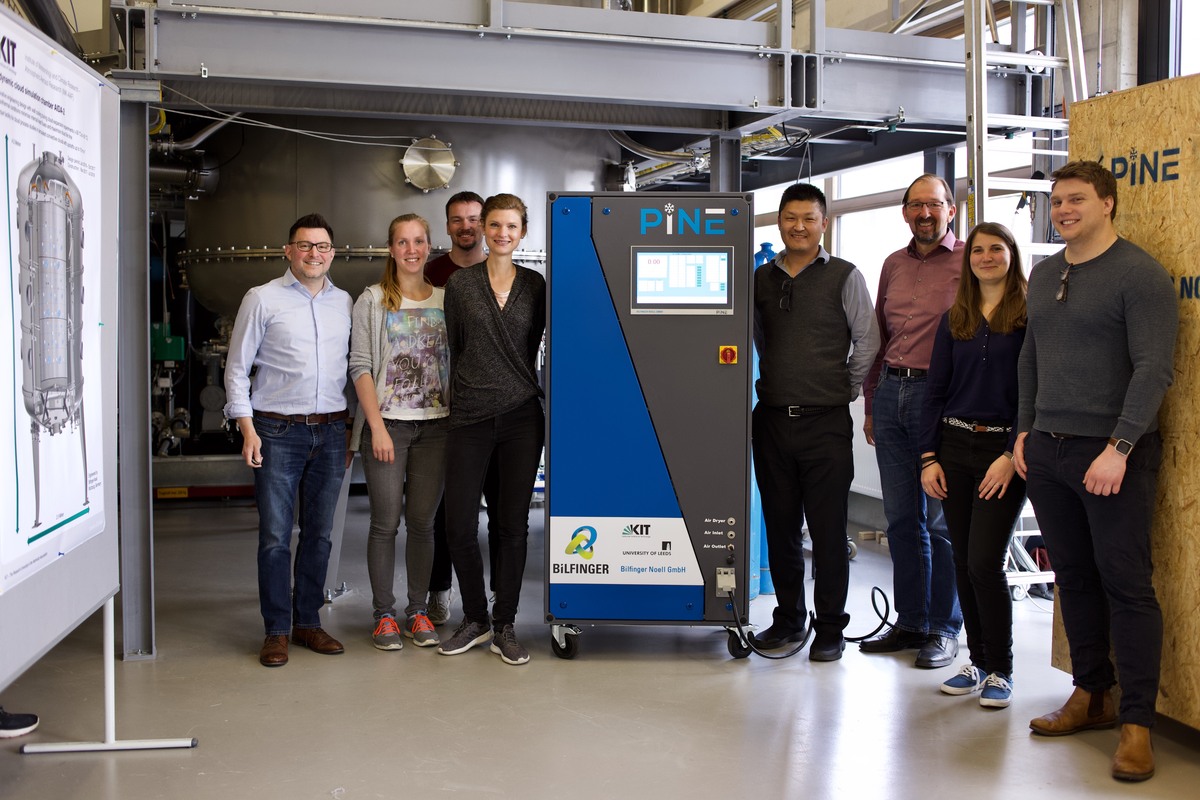First manuscript about the Portable Ice Nucleation Chamber PINE is published
The manuscript submitted to “Atmospheric Measurement Techniques” is finally accepted for publication. In this study, we introduce our new mobile cloud chamber “PINE” and demonstrate its working principle in a set of laboratory and field studies. Being capable of operating continuously and in an automated way, the instrument is one of the first cloud chambers applicable for long-term monitoring of INP concentrations.
PINE was developed in cooperation with the group of Prof. Dr. Benjamin Murray from University of Leeds, and Bilfinger Noell GmbH, under the framework of a technology transfer project from KIT.
Möhler et al. (2020), The portable ice nucleation experiment PINE: a new online instrument for laboratory studies and automated long-term field observations of ice-nucleating particles, Atmos. Meas. Tech., https://doi.org/10.5194/amt-2020-307
https://amt.copernicus.org/preprints/amt-2020-307/
Abstract: Atmospheric ice-nucleating particles (INP) play an important role in determining the phase of clouds, which affects their albedo and lifetime. A lack of data on the spatial and temporal variation of INPs around the globe limits our predictive capacity and understanding of clouds containing ice. Automated instrumentation that can robustly measure INP concentrations across the full range of tropospheric temperatures is needed in order to address this knowledge gap. In this study, we demonstrate the functionality and capacity of the new Portable Ice Nucleation Experiment (PINE) to study ice nucleation processes and to measure INP concentrations under conditions pertinent for mixed-phase clouds, with temperatures from about −10 °C to about −38 °C. PINE is a cloud expansion chamber which avoids frost formation on the cold walls, and thereby omits frost fragmentation and related background ice signals during the operation. The development, working principle, and treatment of data for the PINE instrument is discussed in detail. We present extensive laboratory based tests where PINE measurements were compared with those from the established AIDA (Aerosol Interaction and Dynamics in the Atmosphere) cloud chamber. The results show good agreement of PINE with AIDA for homogeneous freezing of pure water droplets and the immersion freezing activity of mineral aerosols. Results from a first field campaign conducted at the Atmospheric Radiation Measurement (ARM) Southern Great Plains (SGP) observatory in Oklahoma, USA, from October 1 to November 14, 2019 with the latest PINE design (a commercially available PINE chamber) are also shown, demonstrating PINE’s ability to make automated field measurements of INP concentrations at high time resolution of about 8 minutes with continuous wall temperature scans between −5 and −35 °C. During this field campaign, PINE was continuously operated for 45 days in a fully automated and semi-autonomous way, demonstrating the capability of this new instrument to be also used for longer term field measurements and INP monitoring activities in observatories.
The instrument is commercially available from Bilfinger Noell GmbH. More information can be found at https://www.noell.bilfinger.com/pine/#c167514

